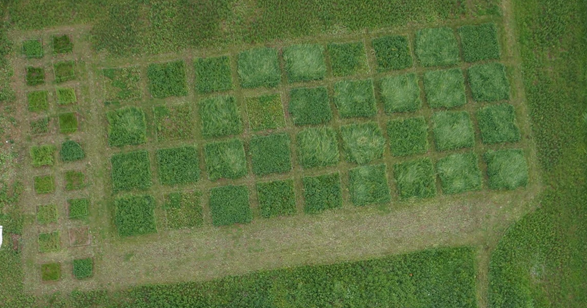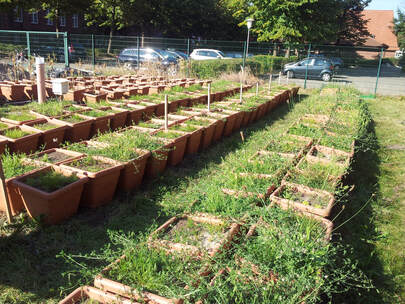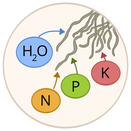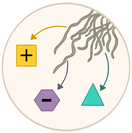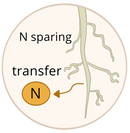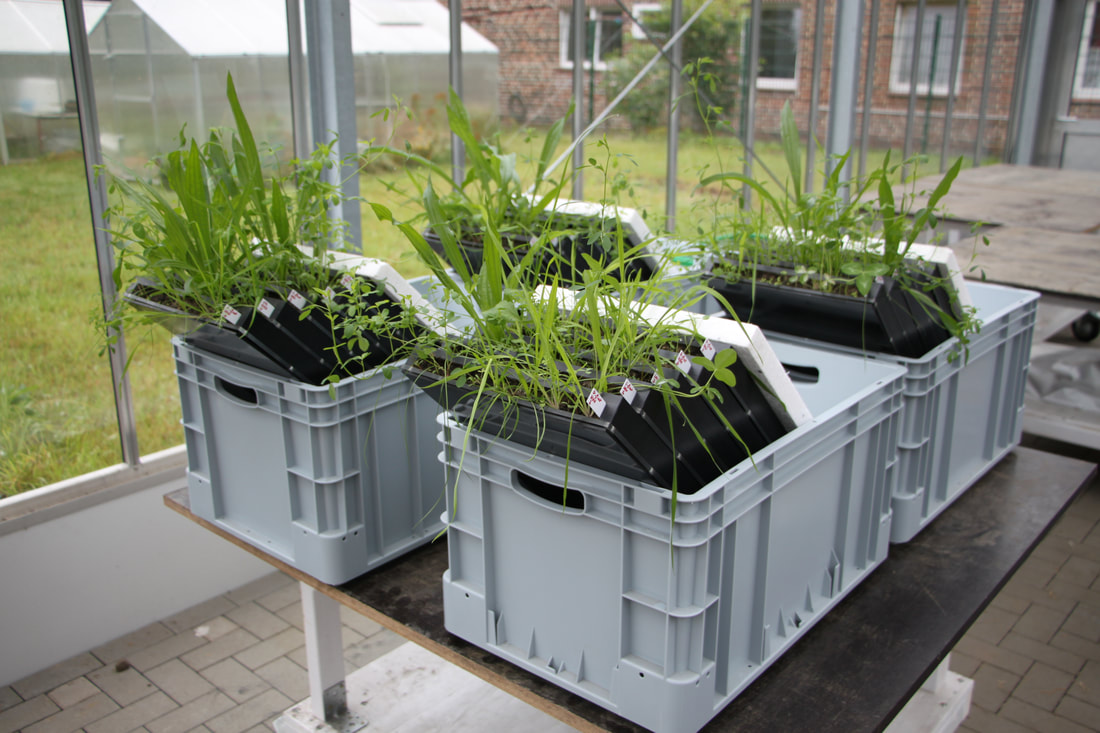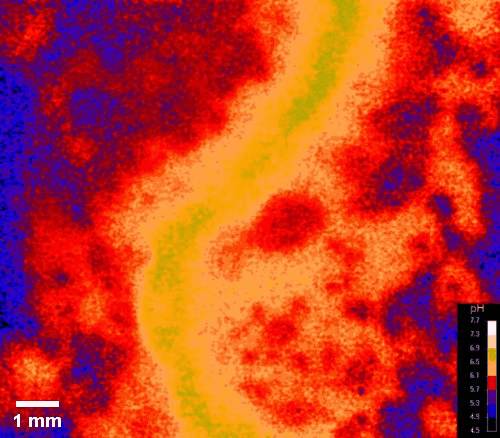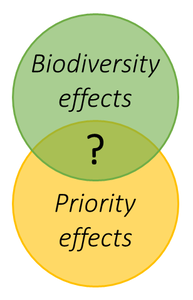What is a priority effect?
Communities of living organisms are historically contingent. This means that both the structure and functioning of communities are affected by the order and timing of past events such as disturbances or species arrival during assembly. Ecologists refer to this phenomenon as a priority effect. Priority effects are gaining momentum in ecology and are now studied through a wide range of experimental systems covering all kingdoms of life: microbes (both prokaryotes and eukaryotes), fungi, animals, and plants. In my research, I am mainly focusing on priority effects occurring in temperate grassland plant communities.
Despite the importance of priority effects for the structure and functioning of plant communities, there are still many questions that need to be answered: How do priority effects drive the structure and functioning of plant communities above and below the soil surface? What are the mechanisms leading to the creation of priority effects? How predictable are they? How do weather conditions during plant establishment affect the creation and persistence of priority effects? These are some of the questions that my colleagues and I aim to answer using a combination of mesocosm and field experiments in which plant order of arrival is manipulated.
Despite the importance of priority effects for the structure and functioning of plant communities, there are still many questions that need to be answered: How do priority effects drive the structure and functioning of plant communities above and below the soil surface? What are the mechanisms leading to the creation of priority effects? How predictable are they? How do weather conditions during plant establishment affect the creation and persistence of priority effects? These are some of the questions that my colleagues and I aim to answer using a combination of mesocosm and field experiments in which plant order of arrival is manipulated.
Unravelling priority effect mechanisms
|
Priority effects occur when species that arrived early during assembly affect the establishment, growth, or reproduction of species arriving later. Depending on the direction of the effect that early-arriving species have on the late ones, priority effects can be either positive (late species favoured by early species) or negative (late species inhibited by early species).
Priority effects are not just a matter of competition for limited resources. In a paper published in 2015, Tad Fukami defined two classes of mechanisms leading to the creation of priority effects: niche pre-emption and niche modification. Niche pre-emption is linked to resource capture by early-arriving species: species arriving first at a site decrease the amount of essential resources (e.g., water, nutrients, light) that will be available for species arriving later. Niche modification occurs when early-arriving species modify the types of niches available for late-arriving species. In grasslands, niche modification includes mechanisms such as allelopathy (via root exudation) and biotic plant-soil feedbacks (selection of a particular soil microbiome that can affect the identity of the species able to colonize the community). Since the beginning of my postdoc, I have been particularly interested in understanding the mechanisms leading to positive and negative priority effects in grasslands. Using a combination of techniques including root image analysis, planar optode imaging, and rhizosphere metabolomics, I aim to understand how priority effects created by manipulating plant order of arrival can affect root productivity, root traits, rhizosphere processes, and vertical root distribution (species complementarity). |
Linking assembly and biodiversity research
|
Both diversity and priority effects are important drivers of the structure and functioning of grassland plant communities, but they have been rarely studied in combination. One possible reason for this is that experiments that simultaneously manipulate plant species richness (diversity) and plant order of arrival (priority) are quite challenging to set up because of the large number of treatment combinations that such experiment would have. However, I believe that long-term experiments that consider historical contingency in plant species order of arrival alongside plant species richness are now needed in order to gain a better understanding of how diversity and priority effects interactively drive the functioning of plant communities and the mechanisms allowing species to coexist.
|
This idea is motivated by an analysis that I performed during my postdoc using species-specific plant biomass data collected from a field experiment that manipulated plant functional group order of arrival in a mesic grassland (Jülich Priority Effect Experiment). This analysis showed that plant order of arrival during assembly can affect the mechanisms driving positive biodiversity effects in grasslands (complementarity and dominance effects). In addition, I found a positive relationship between priority and diversity effects: plots characterised by positive priority effects were associated with the greatest positive biodiversity effect values. Importantly, this increase in grassland overyielding when moving from negative to positive priority effects was solely due to increased complementarity effects. These results highlight the strong interlinkage of biodiversity and order of arrival effects, illustrating the need to combine both biodiversity and assembly approaches in order to improve our understanding of the functioning of grassland ecosystems and increase the predictive power of community ecology.
